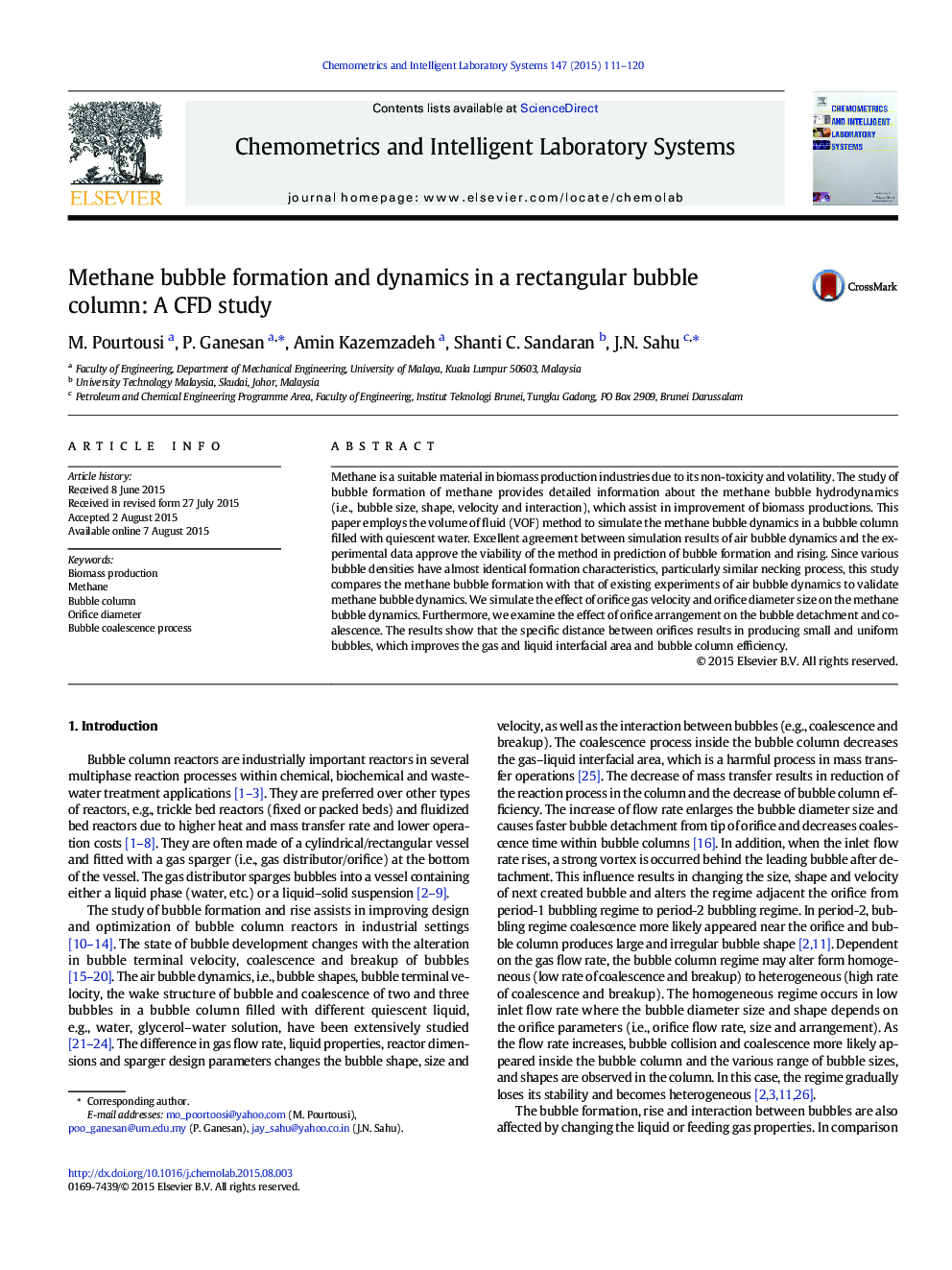| Article ID | Journal | Published Year | Pages | File Type |
|---|---|---|---|---|
| 1180372 | Chemometrics and Intelligent Laboratory Systems | 2015 | 10 Pages |
•The VOF method is used to simulate the methane bubble formation and rise.•Existing large bubble inside the bubble column results in early coalescence.•The specific distance between orifices results in the production of small bubbles.
Methane is a suitable material in biomass production industries due to its non-toxicity and volatility. The study of bubble formation of methane provides detailed information about the methane bubble hydrodynamics (i.e., bubble size, shape, velocity and interaction), which assist in improvement of biomass productions. This paper employs the volume of fluid (VOF) method to simulate the methane bubble dynamics in a bubble column filled with quiescent water. Excellent agreement between simulation results of air bubble dynamics and the experimental data approve the viability of the method in prediction of bubble formation and rising. Since various bubble densities have almost identical formation characteristics, particularly similar necking process, this study compares the methane bubble formation with that of existing experiments of air bubble dynamics to validate methane bubble dynamics. We simulate the effect of orifice gas velocity and orifice diameter size on the methane bubble dynamics. Furthermore, we examine the effect of orifice arrangement on the bubble detachment and coalescence. The results show that the specific distance between orifices results in producing small and uniform bubbles, which improves the gas and liquid interfacial area and bubble column efficiency.
